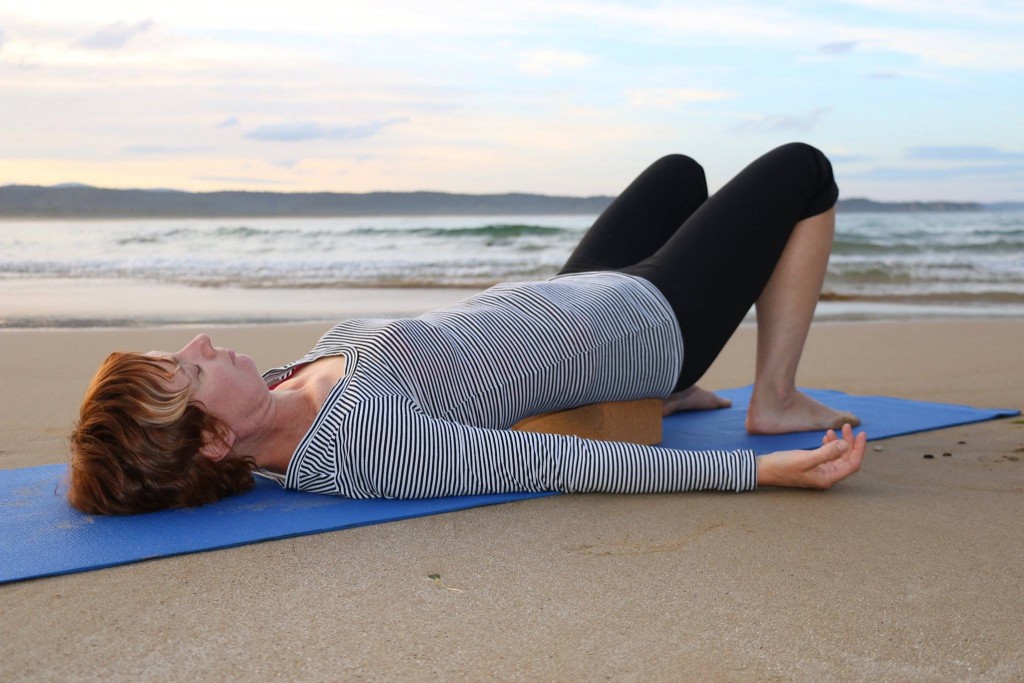A “no effort required” yoga pose for energy and calm
Have too many hours spent crumpled up over a keyboard, steering wheel or household chores got your back feeling stiff and your mojo low?
Many of our everyday tasks, such as driving, working at a desk, carrying kids or bags of heavy groceries, position the body in a forward bend. Too much time leaning over like this can make the shoulders round, the chest cave inwards and may even cramp up the belly, hampering good digestion. We feel hemmed in, slouchy and tired.
Yoga backbends are a wonderful, spirit-boosting counterpose to help you open up, lift and refresh the whole body and mind. And, if you’re worried you’re not bendy or energetic enough to sustain a backbend, I’ve got great news!
Yoga backbends are a wonderful, spirit-boosting counterpose to help you open up, lift and refresh the whole body and mind.
Supported bridge pose is a restorative yoga pose where props (in this case a yoga block*) are used to hold the body securely into a nurturing shape. Once your props are in place, no physical effort is required. All you need to do is relax, let go and let the yoga “do you”!
Soothing your back and topping up your energy levels without doing much sounds like a good deal, right?
Here’s what to do for supported bridge pose:
Preparation:
- Lie down on your mat with the legs bent, feet hip-width apart and pressing lightly into the ground.
- Have the feet comfortably close — you may be able to touch your heels with your fingertips.
- Place a folded blanket under your head for support, if desired.
- Check that your head, neck and tailbone make a straight line.
- Place your block (on it’s lowest elevation) within reach beside you.
- Settle your spine into the mat.
Coming up:
- Breath in as you lift your hips up and away from the mat.
- Slide the block directly underneath your lower back
- Lower down until your sacrum is resting on the surface of your block.
- Make any adjustments so you are completely comfortable.
- Close the eyes, soften your whole body, breathe easily and naturally.
- Rest here for 5 minutes.
Coming down:
- Breath in and lift your hips up and off your block, use one hand to move the block out to the side.
- Starting at the top of your spine, slowly bring your back down on the mat.
- Take a few moments to flatten, noticing the whole of your back in contact with the mat.
- After a few moments, roll over to one side, ensure your head is supported, then push up to a seated position.
- Enjoy a few slow breaths and observe how you feel.* Don’t have a yoga block? Make a DIY version by taking a stack of 3-4 same-sized paperbacks and wrapping them up in a pillowcase.








